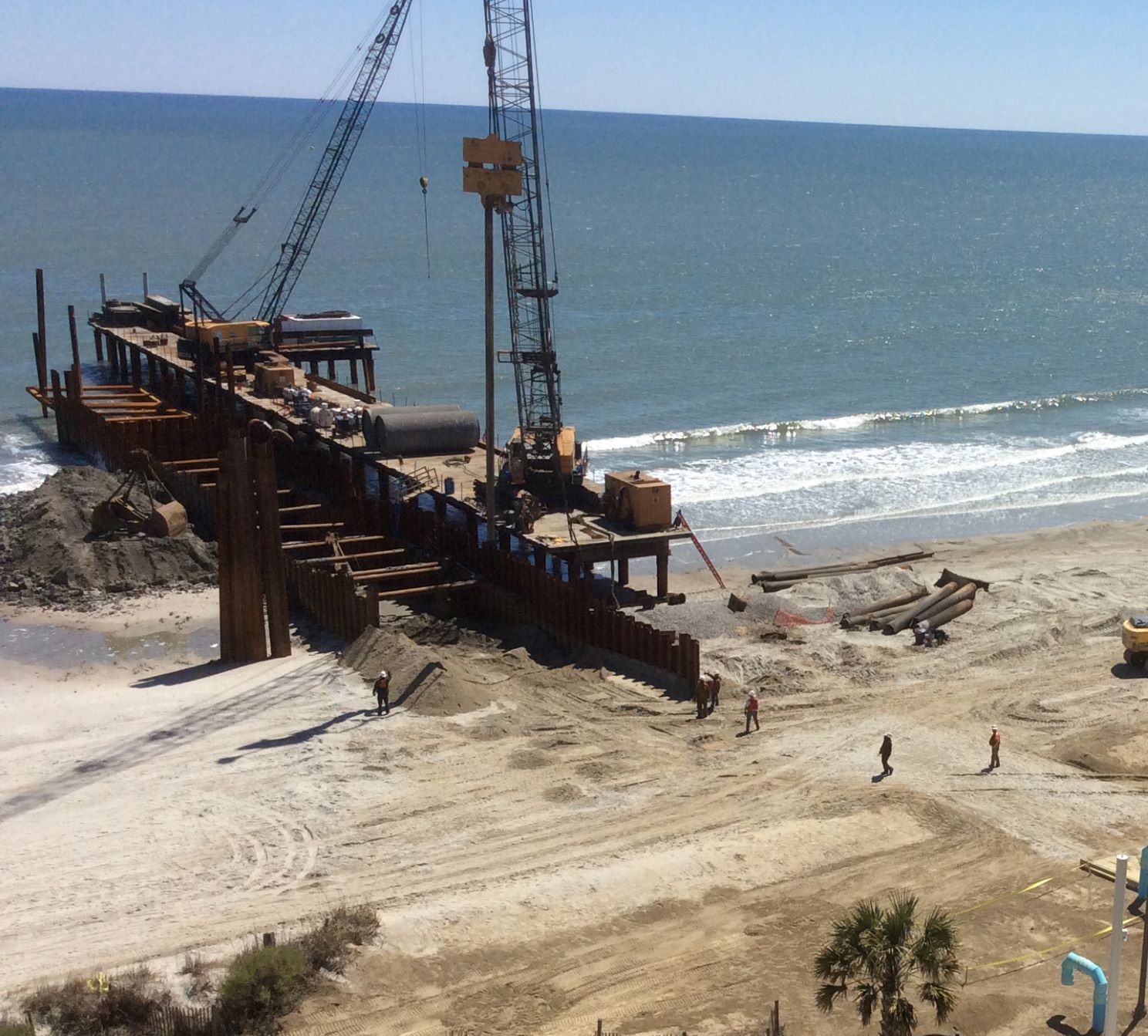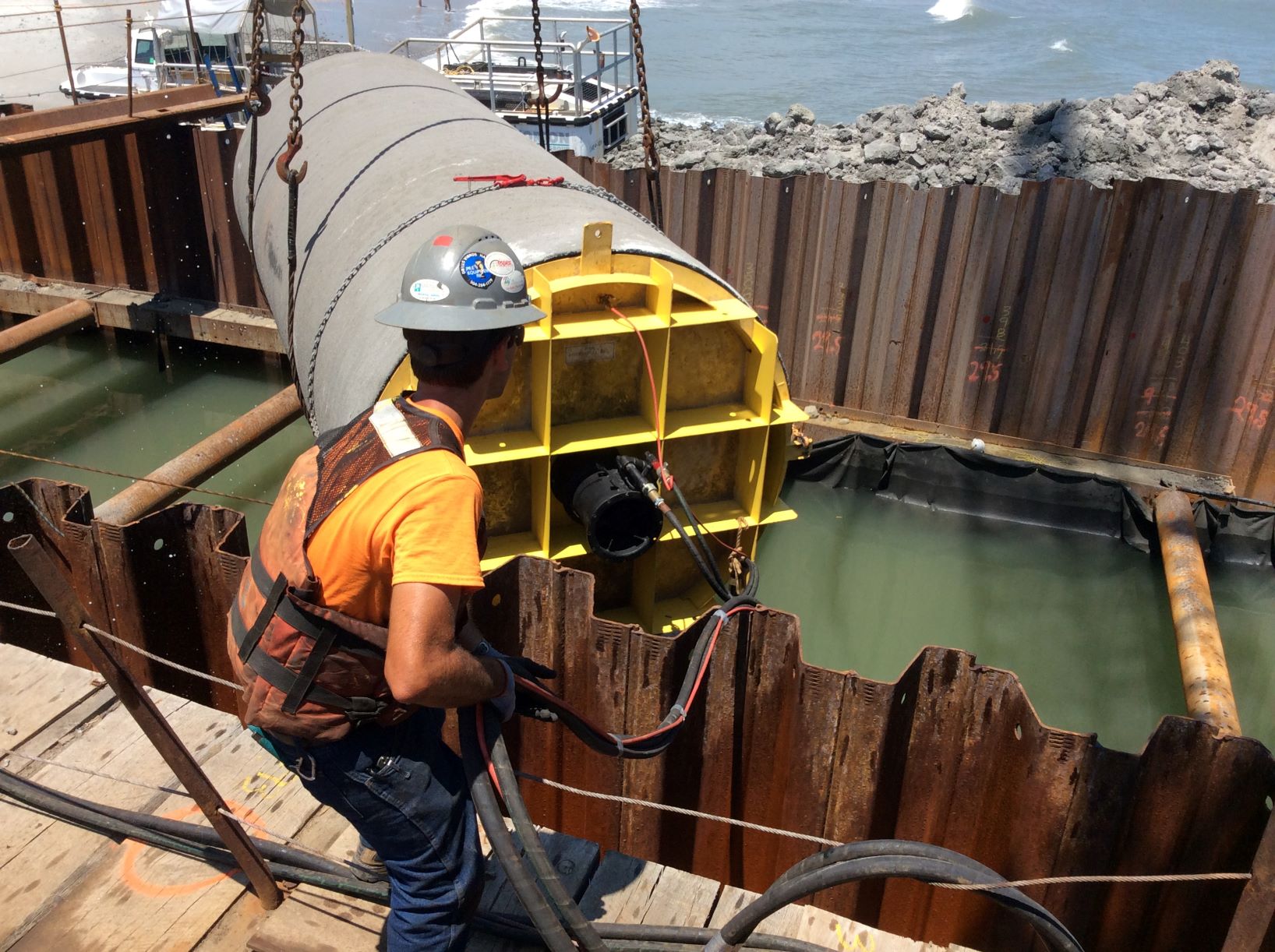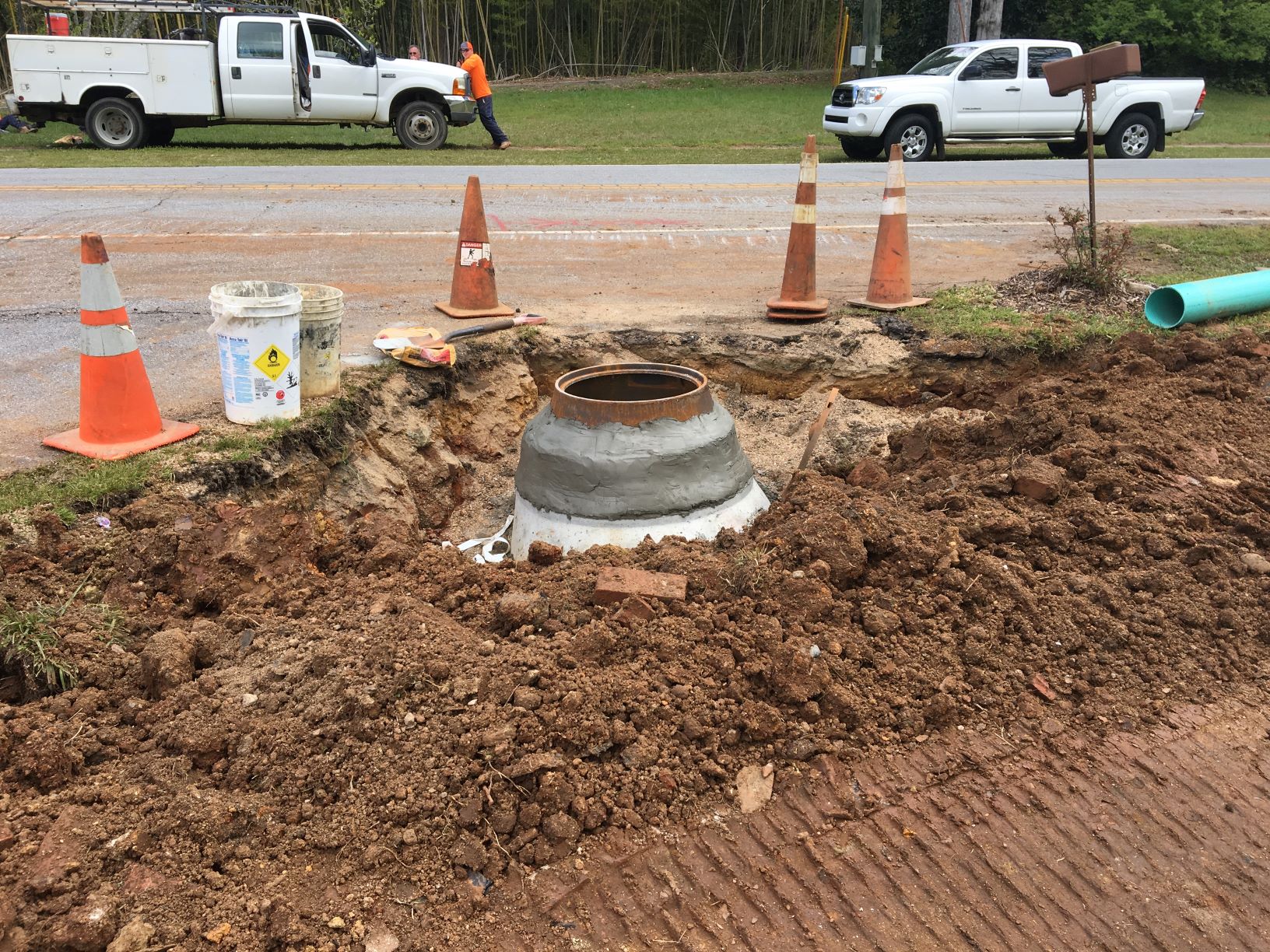By Liz Rosinski, Senior Program Manager, SC Rural Infrastructure Authority
Imagine a day without water — water for drinking, showering, laundry or even making a pot of coffee. That is the message behind the Value of Water Campaign, a national effort to bring attention to the need for investing in water and sewer systems, and what happens when the needs of these systems are ignored.

The City of Myrtle Beach used State Revolving Fund loans to build a deepwater ocean outfall.
Photo: City of Myrtle Beach.
Water, sewer and stormwater infrastructure are in critical need of upgrades and repairs, not just in states like South Carolina, but across the country. According to the U.S. Environmental Protection Agency, nearly $750 billion is needed to meet water quality goals and address public health concerns.
Aging infrastructure is a primary concern. Years of deferred maintenance can make the challenges faced by utility systems significant and costly. A reactionary approach, one that simply makes repairs as needed or initiates corrections only after regulatory violations have been issued, postpones necessary upgrades and ultimately leads to higher costs than if a proactive approach had been taken.

Myrtle Beach built the 4th Avenue North Ocean Outfall project to maintain high
water quality while reducing beach erosion. Photo: City of Myrtle Beach.
Preparing for future needs requires a detailed and honest assessment of the condition of the existing system from life cycle costs to prioritizing projects based on need and impact. Furthermore, there should be a plan for building 20 years into the future — not simply addressing what is needed today. Alternative approaches, such as green infrastructure or the latest technological advances in operations and maintenance of water and wastewater facilities, should be considered. Finally, projects that ensure a system's resiliency to outside, environmental impacts and conditions, from droughts to floods and most anything in between, are also gaining attention nationwide.
In order to do any of these activities, funding is needed. Ideally, user charges and fees should be sufficient to cover the costs associated with the operations and maintenance, as well as reasonable growth of a system. This will ensure sustainability and provide customers with a consistent level of service. When local funds are not enough to complete significant investment projects, outside financing may be necessary.
To that end, towns and cities across South Carolina could consider infrastructure financing through the SC Rural Infrastructure Authority. The RIA was created to assist communities with financing for infrastructure projects in the form of state grants or State Revolving Fund loans. RIA administers this loan program with the SC Department of Health and Environmental Control.
A quick look at recently funded projects shows the variety in types of projects being implemented. In the state's more rural areas, RIA supported projects including the Town of Lyman's $800,000 loan, which it used to replace an outdated pump station and aging force main.
The Town of Lockhart received a $365,000 grant to address environmental and health concerns caused by a sanitary sewer overflow. The blockage occurred in a deteriorated line next to a school. The success of the project came in part from the town's collaboration with Union County, which provided interim assistance and helped to identify a long-term solution.

The Town of Lockhart used a grant to address a sanitary sewer overflow from a
blockage in an old, deteriorated line. Photo: Town of Lockhart.
While many think of infrastructure as only water and sewer, recent extreme weather conditions have highlighted the need for investment in stormwater drainage infrastructure. In coastal cities like the City of Isle of Palms and City of Myrtle Beach, RIA funds were used to address stormwater drainage and runoff.
In Isle of Palms, a $500,000 grant helped the city install new stormwater pipes to mitigate flooding and better handle drainage during heavy rain events. In Myrtle Beach, construction of a deepwater ocean outfall met the beach community's goals of maintaining high water quality standards, reducing beach erosion and alleviating flooding. The city accessed several SRF loans, including a $12 million loan to complete the project.
Another area requiring resources is the need for additional capacity, and two municipalities recently sought outside funding for such projects. The City of Manning received a $500,000 grant to upgrade water lines for a rapidly growing commercial corridor. The Town of Winnsboro used a $13.2 million SRF loan to build a raw water intake from the Broad River that will provide another reliable water source to address needs posed by drought conditions.
These examples show how many communities are taking a proactive approach in significant infrastructure investments across the state. By providing grant and loan financing options, as well as training, technical assistance and funding coordination, RIA is one of many resources available to build local capacity and position communities for success.
Learn more about Rural Infrastructure Authority grants and State Revolving Fund loans, including case studies from cities and counties.
